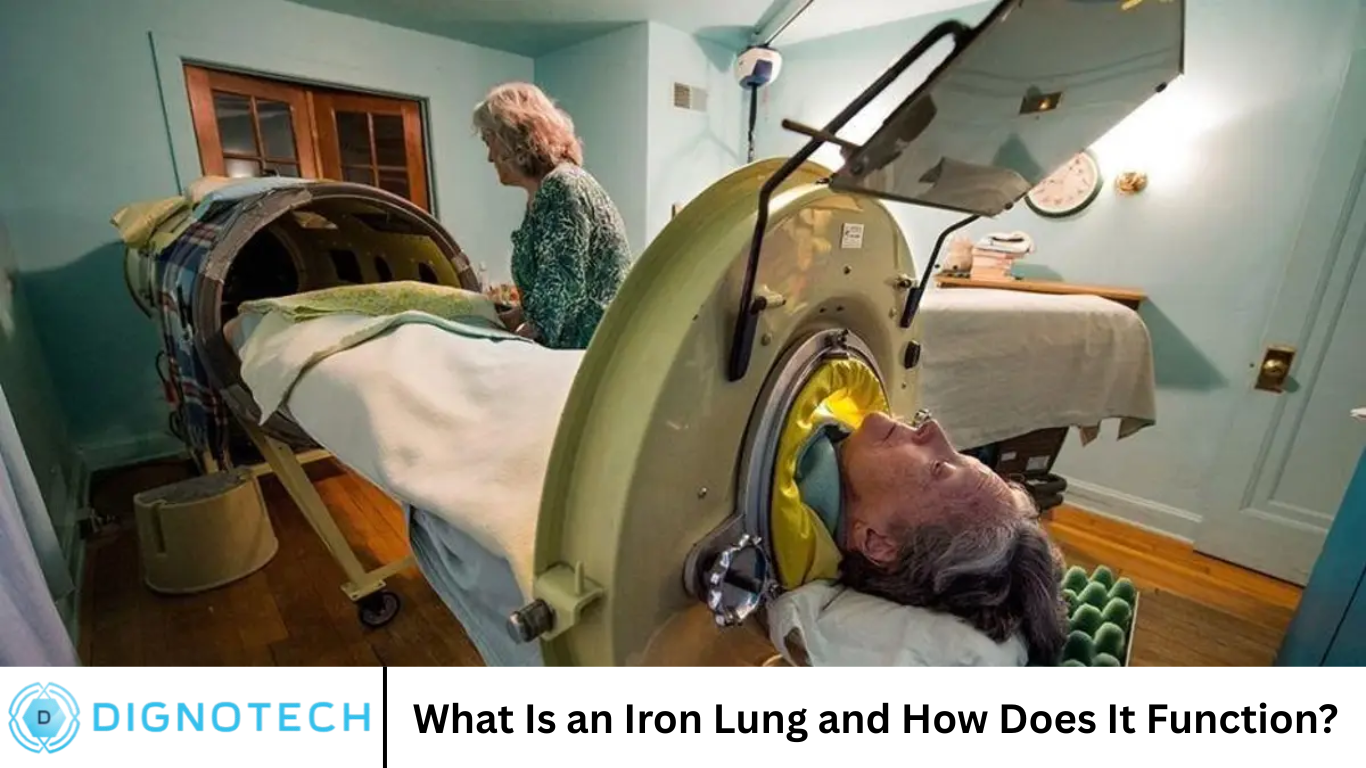What Is an Iron Lung and How Does It Function?

The iron lung, also known as a negative pressure ventilator, was once a crucial life-saving device, particularly during the polio epidemics of the mid-20th century. It assisted patients who suffered from respiratory paralysis, helping them breathe when their muscles were unable to function properly. Although modern technology has largely replaced iron lungs, understanding how this fascinating invention worked and the history behind it provides valuable insight into the development of life-support technologies.
This article explores the mechanics of an iron lung, its history, its impact on the treatment of respiratory diseases, and answers frequently asked questions about this historical device.
The Iron Lung: A Brief Overview
An iron lung is a large, cylindrical, mechanical ventilator that helps patients breathe by altering air pressure around their body. The device works by creating a vacuum-like environment that stimulates the natural process of inhaling and exhaling. It was predominantly used for patients suffering from diseases like polio, which caused paralysis of the respiratory muscles. When people lost the ability to breathe on their own, the iron lung would assist in respiration by creating an artificial breathing process.
How Does an Iron Lung Work?
At its core, the iron lung works by using negative pressure, meaning it creates an environment where the air pressure around the body is lower than the atmospheric pressure, mimicking the natural process of inhalation. The pressure changes are applied to the body from outside, rather than relying on positive pressure like modern ventilators.
Here’s how it functions in detail:
- Patient Positioning: The patient lies down inside the cylindrical chamber of the iron lung, with only their head exposed. The body is fully encased in the device, and a rubber seal is placed around the neck to prevent air from leaking out.
- Creating Negative Pressure: The machine creates a drop in pressure inside the chamber. As the external air pressure is reduced, the patient’s chest expands. This allows air to be drawn into the lungs, similar to how the diaphragm works during normal breathing (inhalation).
- Restoring Normal Breathing Cycle: After inhalation, the pressure inside the chamber is raised to the outside atmospheric pressure, causing the chest to contract and forcing air out of the lungs (exhalation). This cycle of creating negative and normal pressures mimics the body’s natural rhythm of breathing.
- Continuous Monitoring and Adjustment: The iron lung’s internal system needs to be adjusted frequently to ensure that the pressure changes occur in a way that mimics normal breathing. The device could be set to different cycles depending on the severity of the patient’s condition.
Why Was the Iron Lung Important?
The iron lung was a breakthrough in respiratory care. Prior to its invention, there were few ways to assist patients whose respiratory muscles were paralyzed. Diseases like polio and other conditions affecting the nervous system could lead to paralysis of the diaphragm and other muscles involved in breathing, making it impossible for individuals to inhale and exhale naturally.
Before the development of mechanical ventilators, such patients were often at risk of suffocation. The iron lung allowed them to survive by artificially aiding their breathing until they could regain the ability to do so themselves, if recovery was possible.
The History of the Iron Lung
The invention of the iron lung is closely associated with the work of Dr. Philip Drinker and Dr. Louis Shaw. In 1927, these two researchers developed the first version of the iron lung at the Harvard School of Public Health in Boston, Massachusetts. Their device, initially called the “Drinker Respirator,” was designed to assist people who had suffered from respiratory paralysis, a common symptom of diseases like polio.
The iron lung gained widespread use in the early to mid-20th century, particularly during polio epidemics that plagued many countries. The invention was a lifeline for thousands of patients, helping them survive while they recovered from polio or other conditions.
In the 1950s and 1960s, as polio vaccines began to be developed and the polio epidemic started to decline, the use of the iron lung also decreased. By this time, more advanced positive pressure ventilators, which are smaller and easier to use, had replaced the bulky and cumbersome iron lung.
The Iron Lung in Modern Times
Today, the iron lung is mostly a thing of the past. Modern ventilators are far more advanced and can provide more precise control over a patient’s breathing. These modern devices are smaller, more portable, and can be used in a variety of settings, from hospitals to home care.
Despite the decline in usage, there are still a few iron lungs in operation today, often kept in museums or used by individuals who have remained in the devices after long-term use. In fact, one of the most famous iron lung survivors, Paul Alexander, spent decades in an iron lung after contracting polio as a child. He remained in the device for most of his life and became an advocate for polio survivors and the iron lung itself.
Frequently Asked Question
Here are some frequently asked questions about the iron lung:
What was the primary use of the iron lung?
The iron lung was primarily used to assist people who suffered from respiratory paralysis, particularly those who were affected by polio. It was essential for helping these individuals breathe when their muscles, including the diaphragm, were paralyzed and unable to function.
How does an iron lung help a person breathe?
The iron lung works by creating negative pressure around the patient’s body. This pressure change causes the chest to expand and contract, simulating the natural process of inhaling and exhaling. It essentially forces the lungs to take in air (inhalation) and expel air (exhalation), aiding the patient’s breathing.
Why is the iron lung no longer commonly used?
The iron lung was largely replaced by modern positive pressure ventilators, which are smaller, more efficient, and easier to use. These devices allow for more precise control over a patient’s breathing and can be used in a wider variety of settings, including in emergency situations and for home care.
Was the iron lung effective?
Yes, the iron lung was highly effective for its time. It was capable of saving lives by assisting people with respiratory failure, allowing them to breathe when their respiratory muscles could no longer function. However, it required frequent adjustments and was often uncomfortable for patients due to its size and rigidity.
Can a person survive long-term in an iron lung?
Yes, many people survived long-term in an iron lung. Some patients, especially those who contracted polio and suffered long-lasting effects, spent decades in the device. With ongoing use, the iron lung could provide enough respiratory support for patients to survive until they regained the ability to breathe on their own, if possible.
How long did patients need to stay in an iron lung?
The duration of time spent in an iron lung varied from patient to patient. Some individuals only needed the device for a short period, while others with more severe paralysis required it for months or even years. In some extreme cases, individuals used the iron lung for their entire lives, especially if they had long-term or permanent paralysis of the respiratory muscles.
Are there any survivors still using iron lungs?
While most iron lungs are no longer in use, a few individuals who relied on the device for many years are still alive today. One well-known survivor is Paul Alexander, who used an iron lung for decades after contracting polio in the 1950s. Although modern ventilators have largely replaced the iron lung, he and others have continued to use the device, either for medical reasons or as a reminder of their history.
Conclusion
The iron lung was a revolutionary medical device that provided life-saving support to patients suffering from respiratory paralysis, particularly during the polio epidemics of the 20th century. By mimicking the natural process of breathing through negative pressure, it allowed individuals to survive when their own muscles were no longer able to function. Although modern ventilators have largely replaced iron lungs, this historical device remains an important part of medical history, demonstrating the creativity and innovation in healthcare during a critical time in the fight against polio and other diseases.





